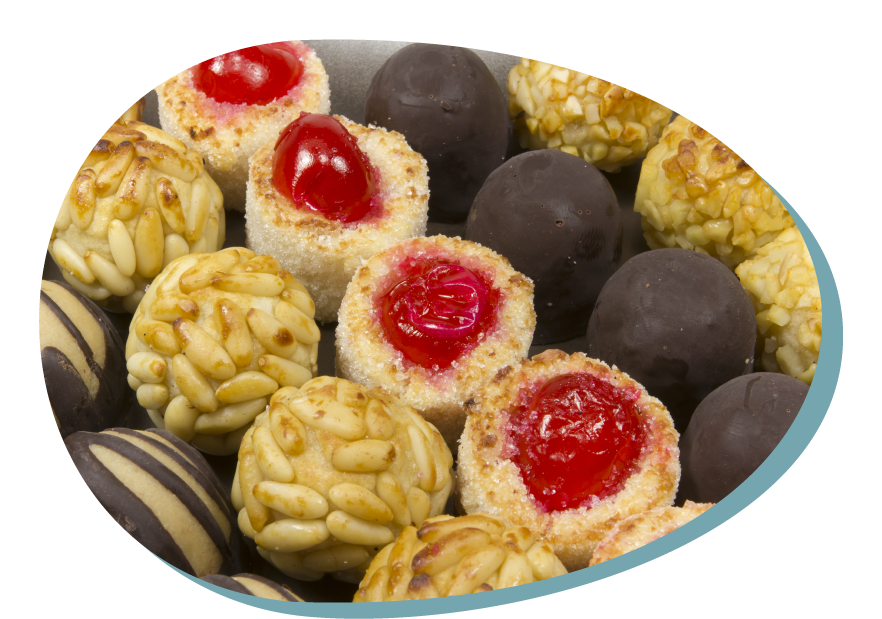Making “Panellets”
Language: English
Description
To make “panellets” and observe how the dough changes before and after being baked.
Scientific concept introduced
Mix ingredients, change before and after being baked. (maillard reaction)
Creative and critical thinking
To observe what happens in the oven.
Mathematical reasoning
To weight the ingredients using an analog scale.
Scientific thinking
Asking questions about the change. Use of digital tools (digital board).
Learning how to learn
Motivation to learn and engage. Feeling of self-efficacy in learning.
Additional
Sharing ideas, accepting leadership and management, following the safety rules and discipline.
Making “Panellets”
Overall aims
- To enjoy the process of a cooking recipe: “panellets”.
- To experiment the process to make balls
- To use different digital applications
- To make sweets with potatoes.
Vocabulary – keywords should be understood
Pine nuts, ground almond, boiled potato, sugar, cacao, grated coconut, mixing, dough.
Expected learning outcomes (operational aims)
- To discover and recognize the different kinds of ingredients.
- To weight ingredients
STEM skills – to which the learning unit is related to
CORE STEM SKILLS
Maths: Measuring the ingredients.
Science: Mixing ingredients and make them come together.
See how the dough changes before and after being cooked.
ADDITIONAL SKILLS
–
Teaching methodologies/activity outline
To do the activity, the teachers will introduce the theme which is making “panellets”. They will ask the children “What do we need to make panellets?”. They will make a list of what they say on the digital board. The teachers will then project boxes of the ingredients and they will check if the children recognize the ingredients. Each child will have an ingredient assigned that they will have to bring to the school to make the “panellets”.
With the ingredients brought by the children, we will make the “panellets” following the picture of the recipe to create the dough.
Steps for the recipe
- Mash the potato in a bowl
- Add to the mashed potato the same amount of sugar and ground almond.
- Divide the dough into three parts because we will make three different types of “panellets”.
- Shape the “panellets” and one piece of dough will be coated with pine nuts, the other with cocoa, and the other one with grated coconut.
- Put it in the oven at 180ºC.
- Enjoy the “panellets”!
Assessment of learning
Table of items with choice YES/NO
- Enjoys the activity
- Participates through the discovery of the ingredients
- Recognizes the different ingredients
- recognizes the difference between weight and volume
- Observes the differences in the dough before and after being cooked
Equipment and materials to be used in learning unit (tools, ingredients etc)
- Analog scale
- Sugar
- Pine nuts
- Grated coconut
- Ground almond
- Potato
- Oven
- Cocoa
Kind of setting
Kitchen, class
References – source
–
Making “Panellets”
1. Usefulness for STEM education – integrating content of different disciplines
Cross-curricular character of the resource

The range of S-T-E-M subjects included

The presentation of possibilities of including artistic activities (STEAM approach)

2. Expected learning outcomes
Consistency (links) with preschool core curriculum

Communicativeness of description

3. Methodology of teaching
Clarity, communicativeness of instructions for teachers

Meaningful learning – using practical life problems

Original idea

The level of ease in implementing the methodology to preschool age children

The level of ease in preparing necessary ingredients, materials and equipment needed

4. Sustainability
Ecological characteristics of materials/ results

Supporting healthy eating habits

Relation with local traditions of cooking (using local products)

Low ecological footprint

Possibilities of inclusion (respecting cultural diversity and food intolerances)

5. Class management
Using differentiated forms of work – individual, team work etc.

Individual work

Team work

Whole group
6. Time management

Short activity (10-15 minutes)

Medium activity (20-30 minutes)

Long activity (1 hour or more)

Very long activity (1 day or more)
PDF: https://www.printfriendly.com/p/g/zYVnC6

